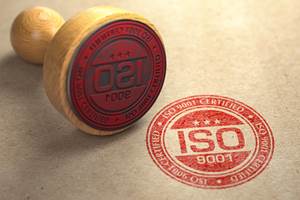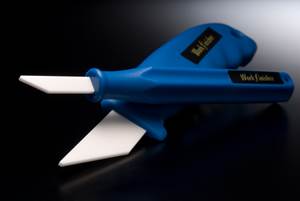Investigating the Value of Having a Presence in Asia
Factors to consider when looking into establishing a joint venture or wholly-owned enterprise in China.
Like it or not, global outsourcing of molds is a fact of life, and many U.S.-based toolmakers are establishing or considering establishing operations in low labor cost Asian countries, such as China, Vietnam, Malaysia, etc. However, quality, on-time delivery and respect for intellectual property rights are three major concerns for U.S. toolmakers entering the Chinese toolmaking industry. This article discusses how the game is played in China, and provides solutions for small to mid-sized U.S. tool shops who are interested in going to China.
As a foreign investor, there are two general means of establishing a business: (1) joint venture (“JV”) with a local partner and (2) wholly-owned subsidiary.
Joint Ventures
Joint ventures (JVs) suit smaller to mid-sized companies that do not have the scale and financial resources to consider a “go-it-alone” approach. They also are favored by Chinese manufacturers that have difficulties selling to the U.S. market. This form of investment is encouraged by the Chinese government, which sees it to be one of the most effective ways of improving the country’s manufacturing technologies and creating jobs for millions of workers who are released from farming.
The advantage to the U.S. partner in following this route is that one can, presumably, rely on the Chinese partner to provide local contacts, and to navigate unfamiliar and treacherous regulatory waters. Despite strong encouragement from the government, there frequently are unexpected pitfalls involving bureaucracy, administrative rules and local politics, which are unfamiliar to U.S. investors and could be detrimental to the JV if not handled properly.
The local partner may also be a source of manpower for the JV. The biggest disadvantages of a JV are: the necessity of shared decision-making responsibilities; the risks of entering a marriage with unsuitable local partners; and, possible difficulties of preserving intellectual property rights.
Reasons for Failure
Regardless of the original good inten-tions and wishes, a number of joint ventures in China end in failure. There could be numerous reasons leading to the dead end. However, most unsuccessful JVs share some of the following problems:
- There is a lack of a trusting and open relationship between the partners.
- The partners have different business objectives, visions or expectations. When sales fall short of the expectations, one of the partners may become disappointed and less committed while the other is happy with progress.
- One of the partners decides to compete against the JV, using the learning they’ve gathered to go out on their own.
- One of the partners neglects the business and the other partner becomes dominant.
- The partner responsible for overseas marketing and sales fails to bring enough business for the JV to survive, perhaps because it puts its 100-percent owned businesses first.
- One of the partners does not have financial resources to support the growth of the JV; when capital is required, either it is not supplied or it becomes necessary for one partner to buy out the interests of the other.
- Failure of the U.S. partner to understand Chinese business culture and environment.
- Miscommunications resulting from language barriers.
Tips for Success
To prevent those problems from happening, here are some tips for successfully setting up a joint venture in China:
1. Get to know several potential partners well before deciding to move forward with negotiations with one. One of the best ways to start the acquaintance process is through trade shows. More and more Chinese toolmakers are attending trade shows in the USA. Companies also can work with go-between firms and agents who specialize in orchestrating match-ups between U.S. and Chinese companies. Once the potential partners are identified, you can start with a simple supplier relationship to find out how each of them performs. If they do a great job as a supplier, they are more likely to be a great business partner as well.
2. From the beginning, list and prioritize the key criteria in choosing a partner. Criteria to consider include location, cost position, quality systems, English speaking capabilities, speed of decision-making, technical capabilities, design capabilities and aggressiveness. Does the culture of your potential partner mesh well with your company’s culture? How do you feel about the key individuals as people? Do you have a sense of comfort with them? Do you feel that they are trustworthy?
3. In some cases, intellectual property is not a concern because there is not anything particularly unique in the part or in the tool construction. However, in other cases, intellectual property is a major concern. Among the ways you can deal with this concern are:
- Investigate if the potential Chinese partners have a long record of working with western companies. Can they provide references of companies they have worked with for many years? Are you able to speak with them?
- Sign a confidentiality agreement early in your discussions.
- Investigate the partner’s internal document control systems and ask for specific examples. Make sure that the partner fully understands the information protection process and will integrate it into every step of the operation.
- Expect to invest a lot of personal time to get to know your potential partners well, and never start a negotiation process until you feel they are trustworthy.
- Partner with tool shops that only make tooling—no molding or assembly. In that way, the chances that they compete against your parts would be very slim.
4. Consider establishing the JV with a corporation in a jurisdiction other than China, such as Hong Kong, the Cayman Islands or the British Virgin islands. Depending on your circumstances, there may be tax advantages. However, another important consideration is that JV legal issues that fall under the jurisdiction of an English Common Law nation, rather than the People’s Republic of China. This is likely to be a more familiar territory for your own lawyers. Then establish the PRC operating company as a “Wholly Foreign Owned Enterprise” (see details on WFOEs below), subsidiary of the JV.
5. Put the JV legal documentation in the proper context. While having a proper and well-documented JV Agreement is essential, you must not rely solely on paperwork to solve disagreements that may occur between you and your partner. Your Chinese partner is more likely to view the JV Agreement as documentation of your mutual understanding at a point in time than as a legally enforceable contract.
6. In the JV Agreement itself, be sure that dispute resolution is addressed. Equally important, in the event of a complete falling out, be sure that divorce procedures are clearly laid out, and that the rights and responsibilities of the parties are clearly stated. Consider this a kind of “pre-nuptial” agreement. Besides putting it down on paper, also discuss it with your partner.
7. If you are able to do so, have voting control over the JV. Even though you may seldom have a need to “out-vote” your partner, the fact that you are in the majority gives you unstated but understood authority that otherwise would be shared.
8. Make sure that the partners have similar expectations regarding the JV, in particular, how the business is to be run, and how quickly it will develop over time.
9. Be prepared to invest a lot of time after the JV Agreement is signed maintaining and enhancing the relationship with your partner. JVs are hard work! If one partner abdicates its responsibility to build the relationship, that relationship will break down and the business will suffer.
10. Keep in mind that the JV is located close to your partner, not to you. You need to establish a physical presence in the JV so that the JV employees remember that you are a full and important partner in the business. Depending on the circumstances, this may require your own employee or employees in the JV, or at the very least, frequent visits.
11. Be patient. If you intend to search for a partner, select one and consummate a deal in less than six months, you are not being realistic. You may get lucky, but probably not. A timeframe of one to two years from start to signing a deal is more realistic. Expect to spend a lot of time getting to know your potential partners as individuals as well as business people. This is expected in Chinese business, but it also is a good thing for you as well.
Wholly-Owned Subsidiary
Most larger corporations choose to invest in China in a form called a “Wholly Foreign Owned Enterprise” (or WFOE, pronounced “wolfie” for short). As the name suggests, the foreign investor owns 100 percent of the enterprise. This is possible for those making a significant investment in China, and which can martial the legal, accounting and operating resources required to successfully plant their flag in the People’s Republic.
While the aforementioned 11 tips for establishing a JV may not apply, there are a whole other set of complexities that must be dealt with in creating a WFOE. Generally speaking, going it alone with a 100-percent owned business in China will be a slower and more costly route than a JV. Also, remember that 100 percent of that cost and risk is yours to bear; nothing is shared with a partner.
A Middle Ground Solution
Fortunately, there is a solution for small to mid-sized firms that wish to fully control their destiny with a wholly-owned subsidiary in China. Today, advisory services exist that provide a complete turnkey approach to establishing a manufacturing WFOE in China. The investor provides the capital and the technology/manufacturing system, and the advisor does the rest—including legal and regulatory compliance, hiring and all administrative support.
In return for these services, the advisor receives fees for service, rather than equity (as in a JV). Such services are similar to the shelter arrangements frequently established in Mexico, but with complete flexibility as to the role the investor wishes to play and to the size of the company the investor is able to afford.
For example, if the investor wishes to have all employees on their payroll, that is fine. If the investor wishes for the advisor to hire the employees, but transition them to the investor, that also is fine. Such advisory services typically have a marketing and customer service office in the U.S. with China-based operations to work with customers on a day-to-day basis.
Summary
Whatever the form of investment you choose to make in China, there are resources available to help you be successful. There is no longer any excuse for not investigating the value of having a presence, on the ground, in the world’s largest developing market.
Related Content
R&D Tax Credit Refresher
A list of the top 10 moldmaking activities frequently performed through daily business that qualifies for an R&D tax credit.
Read MoreHow To Get Buy-In from Your Team for ISO 9001
Here are four tips for getting your team on board once you’ve decided to become ISO 9001 certified.
Read MoreCeramic Deburring, Deflashing Tools Take Into Consideration Difficult Materials, Operator Safety
Boride Engineered Abrasives introduces its new mold polishing equipment, the Work Finisher Tool, which is lightweight, long lasting, won’t rust and is safer and easier to use.
Read MoreU.S. Economic Fundamentals Impacting Moldmaking
The economy continues to downshift, capping growth in moldmaking.
Read MoreRead Next
Are You a Moldmaker Considering 3D Printing? Consider the 3D Printing Workshop at NPE2024
Presentations will cover 3D printing for mold tooling, material innovation, product development, bridge production and full-scale, high-volume additive manufacturing.
Read More





.jpg;maxWidth=300;quality=90)















